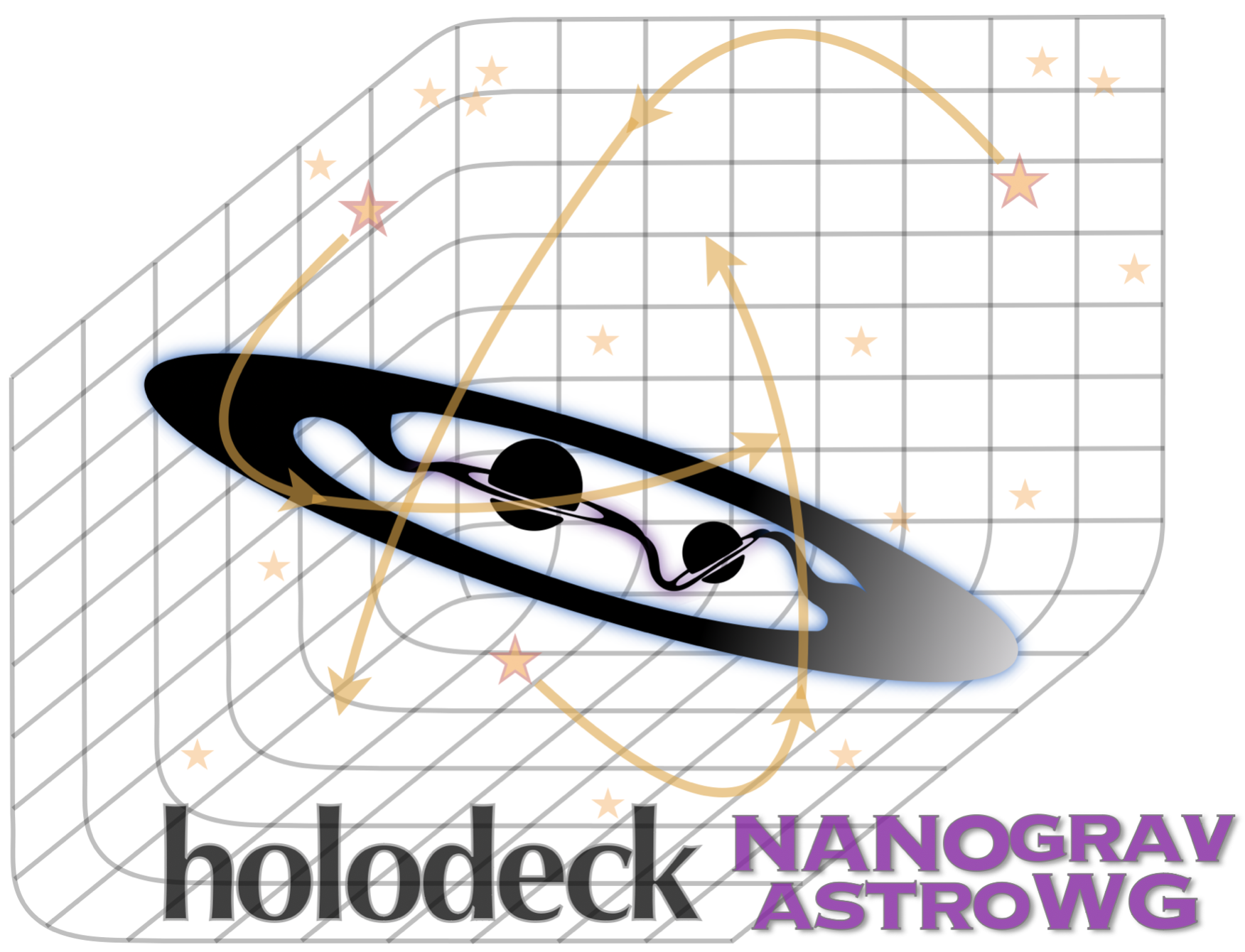holodeck
Massive Black-Hole Binary Population Synthesis for Gravitational Wave Calculations ≋●≋●≋

This package is aimed at providing a comprehensive framework for MBH binary population synthesis. The framework includes modules to perform population synthesis using a variety of methodologies from semi-analytic models, to cosmological hydrodynamic simulations, and even observationally-derived galaxy merger catalogs.
This File:
Getting Started
holodeck getting started guide.holodeck following the installation instructions below.Installation
The holodeck framework is currently under substantial, active development. Recent versions will not generally be available with pip or conda install. Currently holodeck requires python >= 3.9 (tests are run on versions 3.9, 3.10, 3.11). The recommended installation is:
OPTIONAL & recommended: create and activate a new anaconda environment to isolate your build:
conda create --name holo311 python=3.11; conda activate holo311
Note that you will need to activate this environment every time you want to use holodeck. If you’re not familiar with anaconda, take a look at their official Getting started guide. To use your anaconda environment with jupyter notebooks, make sure to add this environment to your ipython kernels:
conda install -c conda-forge ipykernel python -m ipykernel install --user --name=holo311
Clone the
holodeckrepository, and move into the repo directory:git clone https://github.com/nanograv/holodeck.git; cd holodeck
Install the required external packages specified in the requirements file:
pip install -r requirements.txt
OPTIONAL: install development requirements:
pip install -r requirements-dev.txt
Build the required c libraries from
holodeckcythoncode:python setup.py build_ext -i
Perform a development/editable local installation:
python setup.py develop
The ‘editable’ installation allows the code base to be modified, and have those changes take effect when using the holodeck module without having to rebuild/reinstall it. Note that any changes to the cython library files do still require a rebuild by running steps (3) and (4) above.
MPI
For some scripts (particularly for generating libraries), an MPI implementation is required (e.g. openmpi), along with the mpi4py package. This is not included as a requirement in the requirements.txt file as it significantly increases the installation complexity, and is not needed for many holodeck use cases. If you already have an MPI implementation installed on your system, you should be able to install mpi4py with anaconda: conda install mpi4py. To see if you have mpi4py installed, run python -c 'import mpi4py; print(mpi4py.__version__)' from a terminal.
macos users: if you are using homebrew on macos, you should be able to simply run: brew install mpi4py which will include the required openmpi implementation.
Attribution & Referencing
Copyright (c) 2024, NANOGrav.
The holodeck package uses an MIT license.
A dedicated paper on holodeck is currently in preparation, but the package is also described in the recent astrophysics analysis from the NANOGrav 15yr dataset.
@ARTICLE{2023ApJ...952L..37A,
author = {{Agazie}, Gabriella and {et al} and {Nanograv Collaboration}},
title = "{The NANOGrav 15 yr Data Set: Constraints on Supermassive Black Hole Binaries from the Gravitational-wave Background}",
journal = {\apjl},
year = 2023,
month = aug,
volume = {952},
number = {2},
eid = {L37},
pages = {L37},
doi = {10.3847/2041-8213/ace18b},
archivePrefix = {arXiv},
eprint = {2306.16220},
primaryClass = {astro-ph.HE},
adsurl = {https://ui.adsabs.harvard.edu/abs/2023ApJ...952L..37A},
}